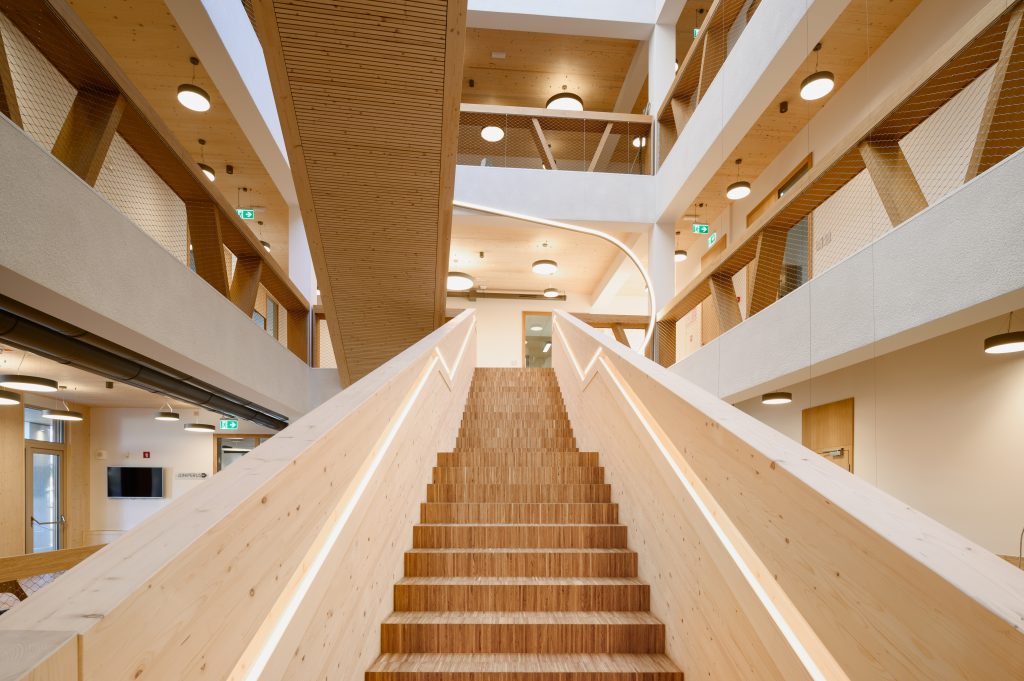
January 7, 2026

Jason Wright, Hickok Cole Architects
As a Project Architect at Hickok Cole Architects, I’m responsible for our firm’s technical production and quality control initiatives. For the past 15 years, the project work I have been engaged in has been largely focused on renovation and repositioning of existing high-rise office buildings. In the process of studying ways to adapt and expand existing buildings, we began researching and exploring mass timber around 2015 because of its lightweight properties, sustainability benefits and low-impact construction. Regionally, I serve on the board that reviews new building codes for adoption within Washington DC and have been advocating for the adoption of mass timber provisions of the model building codes locally.
Recognizing the benefits of mass timber beyond the built environment led me to want to learn more about the product and begin to find ways to integrate it into more projects. The carbon sequestration qualities of the timber, the ability to contribute to sustainable forestry practices and the potential for new fabrication jobs in rural markets are just some of the benefits beyond aesthetic and construction benefits. Additionally, the precision fabrication and biophilic design contributions create a material that is worthy of leaving exposed and celebrated.
The construction sector is evolving rapidly and embracing offsite fabrication methods more and more each year. We are seeing contractors and owners recognizing the benefits of modular construction with its ability to control quality, increased safety for the workers and reduced erection times on site. Regarding green buildings and bio-based materials, we are increasingly seeing owners and architects performing life cycle assessments (LCA) on projects with a focus on global warming potential, energy use, resource depletion and toxic emissions. Projects that utilize products that have more bio-based materials inherently have better LCAs, and the increased demand for these materials with environmental declarations is bringing more and more products to market each year.
The architectural profession is ever-changing, and there is so much to learn and keep up with. As a young architect, I’d suggest getting a broad foundation of the basics of building fundamentals and then picking an area of the profession that interests you and exploring it deeply. Second, don’t be afraid to ask lots of questions. You don’t have to have all the answers; you just have to know who to ask or where to look to find them!
Personally, I’m impressed by the Mjøstårnet in Norway. The ability to build the world’s tallest timber structure in a rural environment serves as a challenge to the rest of the world to find more ways to use this amazing material on a large scale. I’m always interested in keeping tabs on the projects worldwide that are using the material in new and innovative ways that push the envelope.